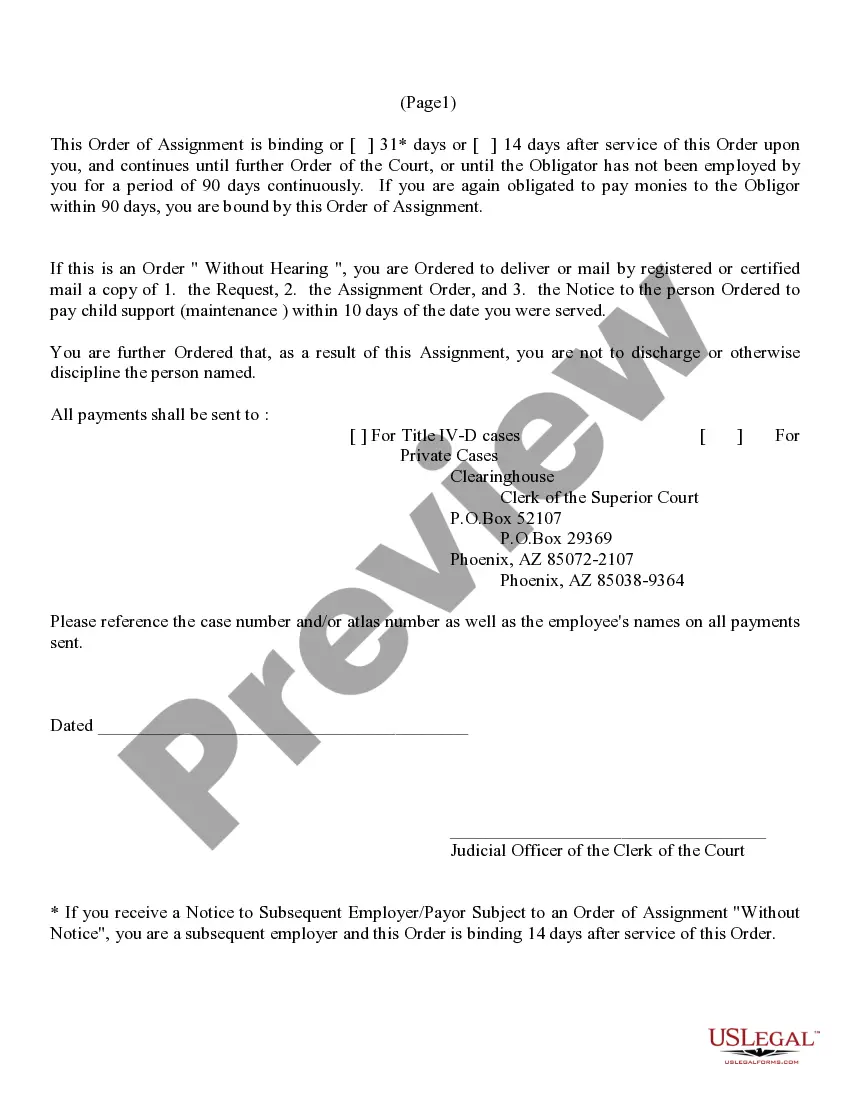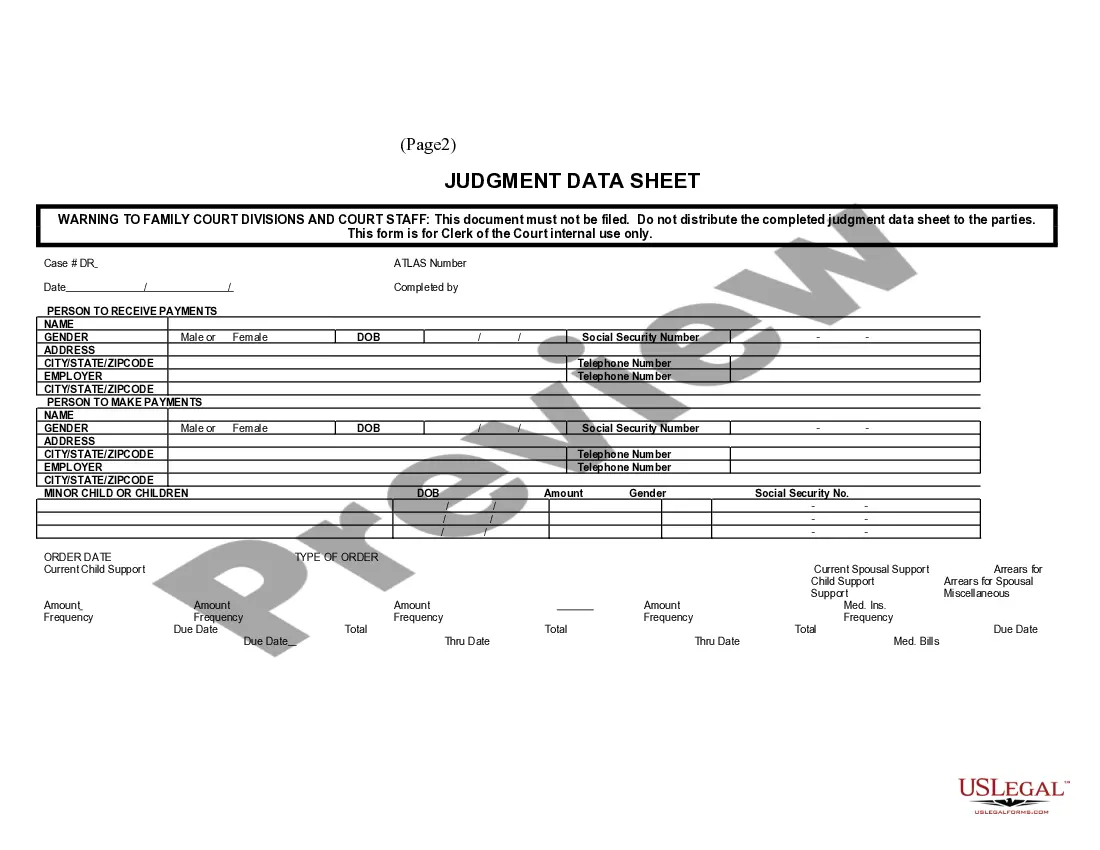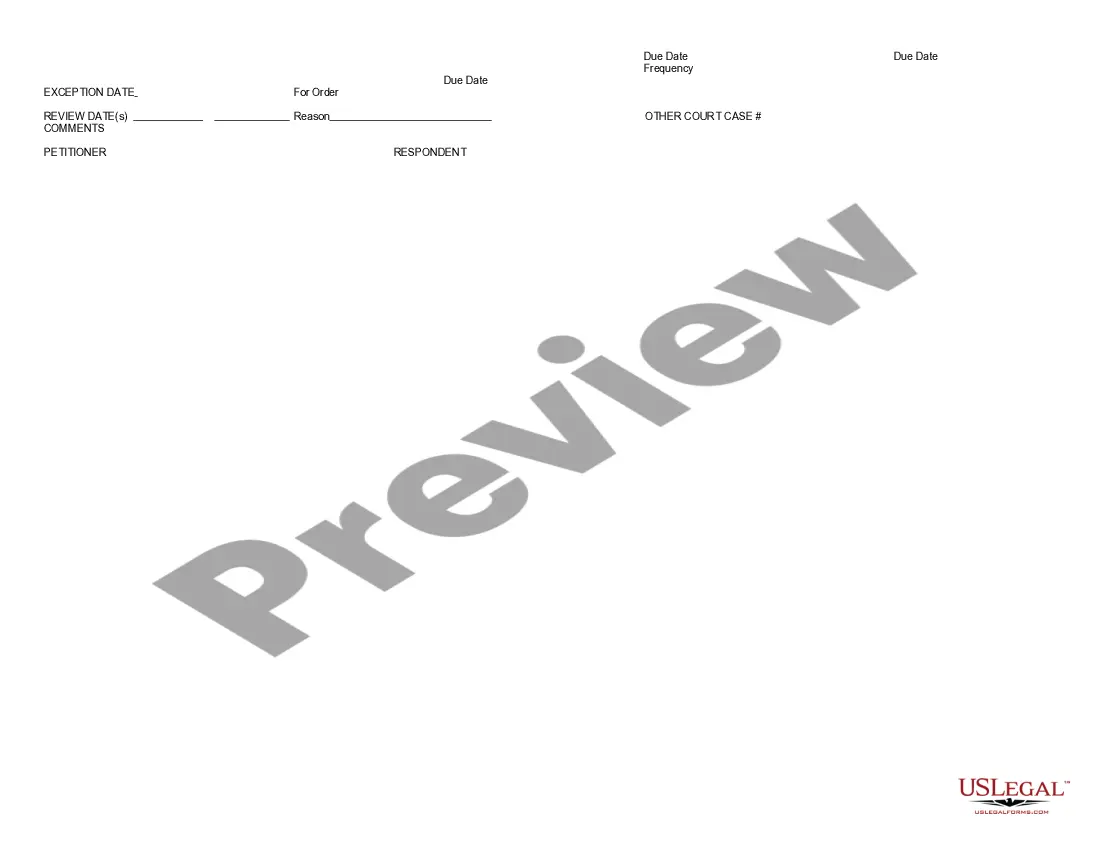A motion is a written request to the court to take a certain action. The court will either grant or deny the motion in accordance with law and court rules. This document, a Motion to Quash Order of Assignment With Attachments, is a model motion requesting the named action from the court (or a general motion form). Adapt to fit your facts and circumstances. Available for download now in standard format(s).
A Tempe Arizona Motion to Quash Order of Assignment With Attachments is a legal document filed in court by a party who wishes to contest or challenge an order of assignment. The order of assignment refers to a court-issued mandate that assigns certain property, funds, or assets to be used towards repayment of a debt or financial obligation. A Motion to Quash Order of Assignment is typically filed when there is a belief that the order was issued in error, lacks legal basis, or conflicts with the rights of the party filing the motion. This motion seeks to invalidate or nullify the order of assignment, thereby providing the party an opportunity to defend their interests and protect their assets. It is important to include relevant attachments when filing a Motion to Quash Order of Assignment. These attachments may vary depending on the specific circumstances of the case, but typically include supporting documentation such as: 1. Affidavit: This is a sworn statement made under oath, detailing the facts and circumstances of the order of assignment and explaining why it should be quashed. 2. Supporting Evidence: Any relevant documents, contracts, financial statements, or legal agreements that support the party's argument against the order of assignment should be attached. This can include bank statements, loan agreements, or any other evidence disproving the basis of the assignment. 3. Legal Authority: Any applicable case law, statutes, or legal precedents that support the party's position should be included as attachments. These can strengthen the argument against the order of assignment by demonstrating legal grounds for invalidation. It is worth noting that there may be different types of Motions to Quash Order of Assignment With Attachments, depending on the nature of the case. For example: 1. Motion to Quash Order of Assignment in Foreclosure Cases: In this context, the motion is typically filed by a homeowner seeking to challenge a court-ordered assignment of their property to a lender or creditor. 2. Motion to Quash Order of Assignment in Debt Collection Cases: This motion may be filed by a debtor who believes that the order of assignment unfairly targets their assets or fails to comply with state or federal debt collection laws. 3. Motion to Quash Order of Assignment in Bankruptcy Cases: In bankruptcy proceedings, a party (either the debtor or a trustee) may file a motion to quash an order of assignment if they can demonstrate that the assignment would impede the proper administration of the bankruptcy estate or violate bankruptcy laws. In conclusion, a Tempe Arizona Motion to Quash Order of Assignment With Attachments is a legal document filed in court to challenge or nullify an order of assignment. It is crucial to include supporting evidence, affidavits, and legal authority as attachments to strengthen the motion's argument. Different variations of this motion may exist depending on the specific circumstances, such as foreclosure, debt collection, or bankruptcy cases.A Tempe Arizona Motion to Quash Order of Assignment With Attachments is a legal document filed in court by a party who wishes to contest or challenge an order of assignment. The order of assignment refers to a court-issued mandate that assigns certain property, funds, or assets to be used towards repayment of a debt or financial obligation. A Motion to Quash Order of Assignment is typically filed when there is a belief that the order was issued in error, lacks legal basis, or conflicts with the rights of the party filing the motion. This motion seeks to invalidate or nullify the order of assignment, thereby providing the party an opportunity to defend their interests and protect their assets. It is important to include relevant attachments when filing a Motion to Quash Order of Assignment. These attachments may vary depending on the specific circumstances of the case, but typically include supporting documentation such as: 1. Affidavit: This is a sworn statement made under oath, detailing the facts and circumstances of the order of assignment and explaining why it should be quashed. 2. Supporting Evidence: Any relevant documents, contracts, financial statements, or legal agreements that support the party's argument against the order of assignment should be attached. This can include bank statements, loan agreements, or any other evidence disproving the basis of the assignment. 3. Legal Authority: Any applicable case law, statutes, or legal precedents that support the party's position should be included as attachments. These can strengthen the argument against the order of assignment by demonstrating legal grounds for invalidation. It is worth noting that there may be different types of Motions to Quash Order of Assignment With Attachments, depending on the nature of the case. For example: 1. Motion to Quash Order of Assignment in Foreclosure Cases: In this context, the motion is typically filed by a homeowner seeking to challenge a court-ordered assignment of their property to a lender or creditor. 2. Motion to Quash Order of Assignment in Debt Collection Cases: This motion may be filed by a debtor who believes that the order of assignment unfairly targets their assets or fails to comply with state or federal debt collection laws. 3. Motion to Quash Order of Assignment in Bankruptcy Cases: In bankruptcy proceedings, a party (either the debtor or a trustee) may file a motion to quash an order of assignment if they can demonstrate that the assignment would impede the proper administration of the bankruptcy estate or violate bankruptcy laws. In conclusion, a Tempe Arizona Motion to Quash Order of Assignment With Attachments is a legal document filed in court to challenge or nullify an order of assignment. It is crucial to include supporting evidence, affidavits, and legal authority as attachments to strengthen the motion's argument. Different variations of this motion may exist depending on the specific circumstances, such as foreclosure, debt collection, or bankruptcy cases.














